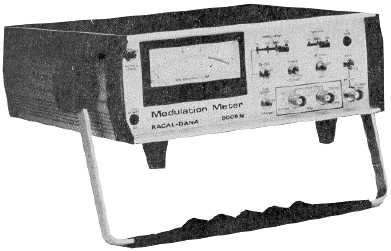5-9
Figure 5-7.—Typical modulation analyzer.
Q-3.
What is meant by frequency deviation?
SPECTRUM WAVEFORM ANALYSIS AND MEASUREMENTS
An analysis of a complex waveform, prepared in terms of a graphic plot of the amplitude versus
frequency, is known as SPECTRUM ANALYSIS. Spectrum analysis recognizes the fact that waveforms
are composed of the summation of a group of sinusoidal waves, each of an exact frequency and all
existing together simultaneously.
Three axes of degree (amplitude, time, and frequency) are important when considering varying
frequency. The time-domain (amplitude versus time) plot is used to consider phase relationships and basic
timing of the signal and is normally observed with an oscilloscope. The frequency-domain (amplitude
versus frequency) plot is used to observe frequency response - the spectrum analyzer is used for this
purpose. Figure 5-8 illustrates the differences between frequency- and time-domain plots. View A
illustrates a three-dimensional coordinate of a fundamental frequency (f1) and its second harmonic (2f1)
with respect to time, frequency, and amplitude. View B shows the time-domain display as it would be
seen on an oscilloscope. The solid line, f1 + 2f1 is the actual display. The dashed lines, f and 2f1 are drawn
to illustrate the fundamental and second harmonic frequency relationship used to formulate the composite
signal f1 + 2f1. View C is the frequency-domain display as it would be seen on a spectrum analyzer. Note
in view C that the components of the composite signal are clearly seen.
Q-4.
A spectrum analyzer is designed to display what signal characteristic?

